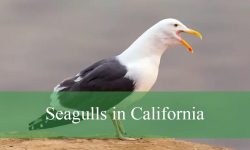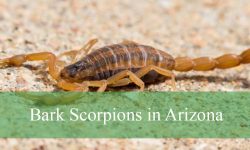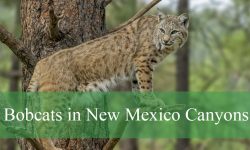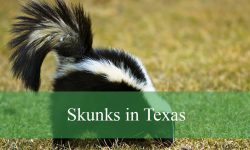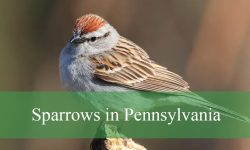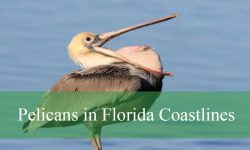Virginia’s rich variety of habitats, from quiet forests and rolling hills to coastal marshes and urban parks, creates the perfect environment for birdlife. Birds in Virginia are easy to find and enjoy, thanks to the state’s mild climate and seasonal migrations. With over 400 species documented, Virginia is one of the best places on the East Coast to observe birds year-round.
Colorful and familiar species like the Northern Cardinal, Blue Jay, and Carolina Wren are just a few of the common birds that make daily appearances in backyards and woodlands. Each bird offers something unique, from distinctive songs and calls to eye-catching feathers and behaviors. Learning to identify them adds a deeper appreciation to any outdoor experience.
This guide features 20 types of birds in Virginia, complete with pictures and identification tips to help you recognize them in the wild. Whether seen during a quiet morning walk or spotted near a feeder, these birds bring life and color to the Virginia landscape throughout every season.
Common Backyard Birds in Virginia
Blue Jay (Cyanocitta cristata)
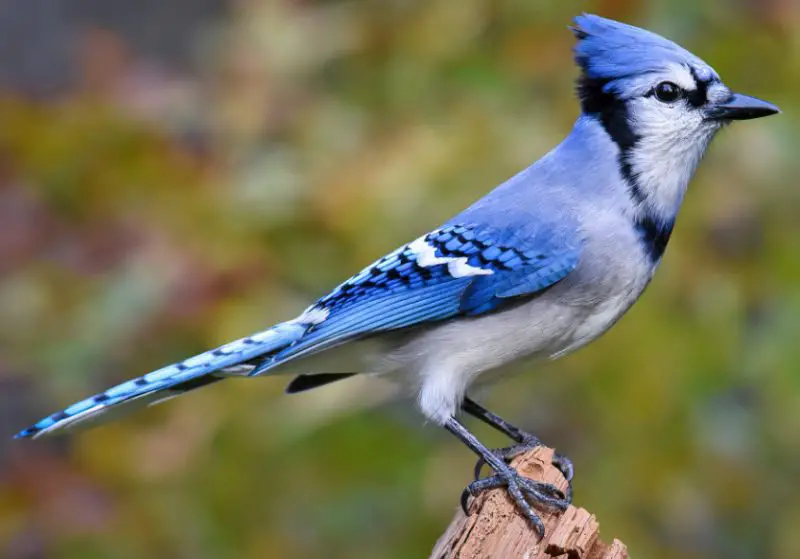
The Blue Jay is a bold, intelligent bird easily recognized by its vivid blue plumage, white underparts, and black necklace-like markings around the neck. Its striking crest can be raised or lowered depending on its mood, and its face is marked by expressive black lines and a stout black bill.
Blue Jays measure about 9 to 12 inches long, with a wingspan of up to 16 inches. Their calls are loud and varied, including harsh “jay-jay” cries, clicks, whistles, and mimicked sounds from other birds or even human-made noises. Known for their intelligence, Blue Jays often cache food and can solve complex problems.
In Virginia, Blue Jays are common throughout the year in forests, suburbs, parks, and backyards. They prefer oak trees due to their acorn diet but are highly adaptable and frequently visit feeders. Their loud presence and striking appearance make them a prominent and entertaining part of Virginia’s birdlife.
Northern Cardinal (Cardinalis cardinalis)

The Northern Cardinal is one of the most recognizable birds in Virginia, thanks to its vivid coloration and melodic song. Males are a striking bright red with a black mask around the face, while females display a more subdued brownish-red hue with warm orange highlights. Both sexes have a prominent crest on their head and a thick, cone-shaped reddish bill.
Cardinals are medium-sized songbirds, measuring about 8 to 9 inches in length with a wingspan around 10 to 12 inches. Their call is a loud, clear whistle that sounds like “cheer-cheer-cheer” or “birdie-birdie-birdie.” Males often sing to defend their territory and to attract mates, while females also sing—sometimes while sitting on the nest.
Northern Cardinals are non-migratory and can be found throughout Virginia year-round. They favor forest edges, suburban yards, parks, and shrubby areas. These birds are frequent visitors to backyard feeders, especially those offering sunflower seeds, and they thrive in a variety of habitats across the state.
Carolina Wren (Thryothorus ludovicianus)
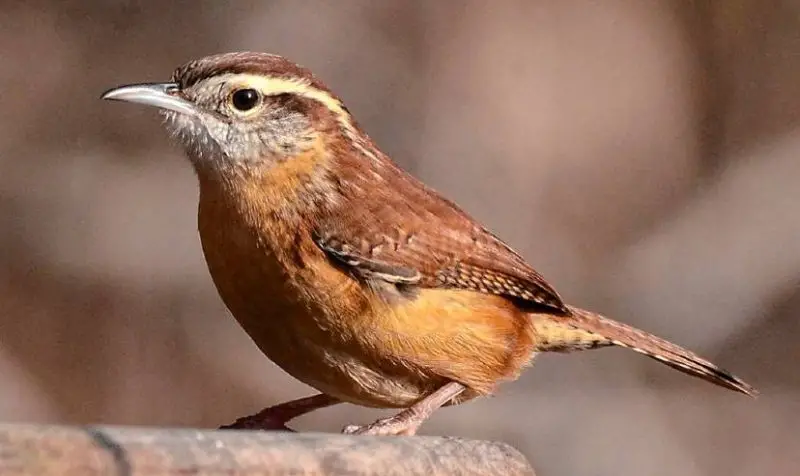
The Carolina Wren is a small yet feisty songbird known for its powerful voice and lively personality. It has a warm, reddish-brown body, buff-colored underparts, and a distinctive white eyebrow stripe that contrasts sharply with its darker head. Its tail is often held upright, giving it a perky appearance.
Measuring around 5.5 inches long, the Carolina Wren is small in size but makes up for it with its volume. Its song is a loud and rolling “teakettle-teakettle-teakettle,” repeated persistently and often heard even in winter. Both males and females are vocal, though males do most of the singing, especially during breeding season.
This species is a year-round resident of Virginia, found in dense thickets, woodland undergrowth, gardens, and even urban areas. Carolina Wrens are curious and adaptable, often nesting in hanging plants, mailboxes, or open sheds. They prefer areas with lots of cover and are common throughout the southeastern U.S., including every corner of Virginia.
Tufted Titmouse (Baeolophus bicolor)
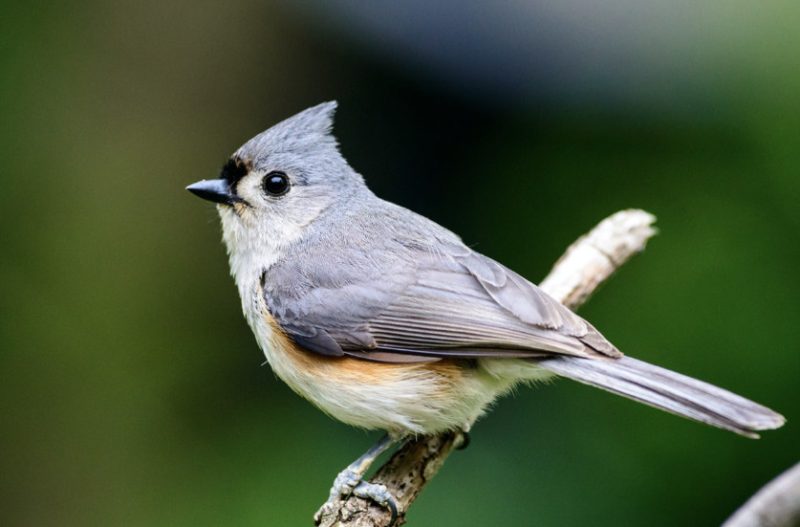
The Tufted Titmouse is a small, energetic bird that’s easy to spot at backyard feeders across Virginia. It has a soft gray back, white underparts, and a black forehead. Its most noticeable feature is the tall gray crest on its head, which gives it an alert and expressive appearance.
This species measures about 6 to 6.5 inches long with a wingspan of around 8 to 10 inches. Its song is a clear, whistled “peter-peter-peter,” often heard echoing through woodlands in the morning. Titmice are inquisitive birds that travel in small flocks and frequently join mixed feeding groups with chickadees and nuthatches.
In Virginia, Tufted Titmice are common year-round in deciduous and mixed forests, as well as suburban neighborhoods with mature trees. They readily use bird feeders offering seeds and suet and often nest in tree cavities or nest boxes. Their adaptability makes them a staple in Virginia’s birding scene.
Carolina Chickadee (Poecile carolinensis)
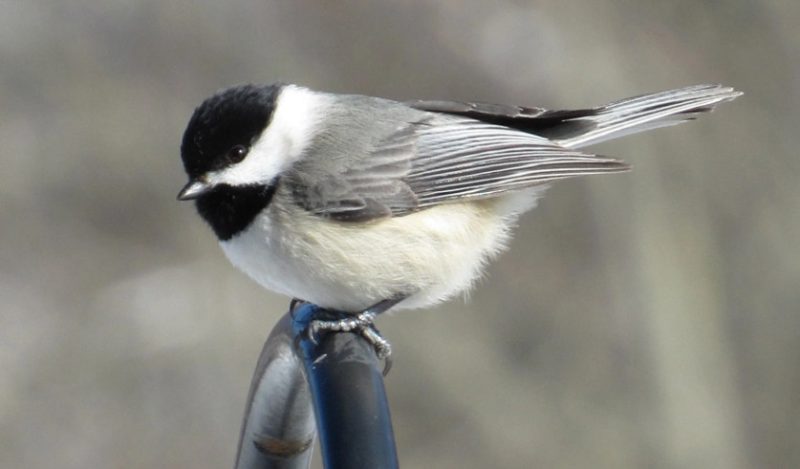
The Carolina Chickadee is a tiny, active bird with a black cap, black bib, white cheeks, and soft gray wings and back. Despite its small size, it has a bold personality and is often seen flitting through trees or hanging upside down from branches while foraging.
It measures around 4.5 to 5 inches long with a wingspan of 6 to 8 inches. The chickadee’s call is a familiar “chick-a-dee-dee-dee,” which varies in intensity based on perceived threats. Its song is a sweet, whistled “fee-bee fee-bay.” These birds are sociable and form flocks in winter with other species for safety and feeding.
Carolina Chickadees are widespread across Virginia and remain in the state year-round. They are found in forests, woodlots, parks, and residential areas with plenty of trees. They often visit feeders and will nest in cavities, including birdhouses. Their tame nature and cheerful calls make them favorites among birdwatchers.
American Robin (Turdus migratorius)
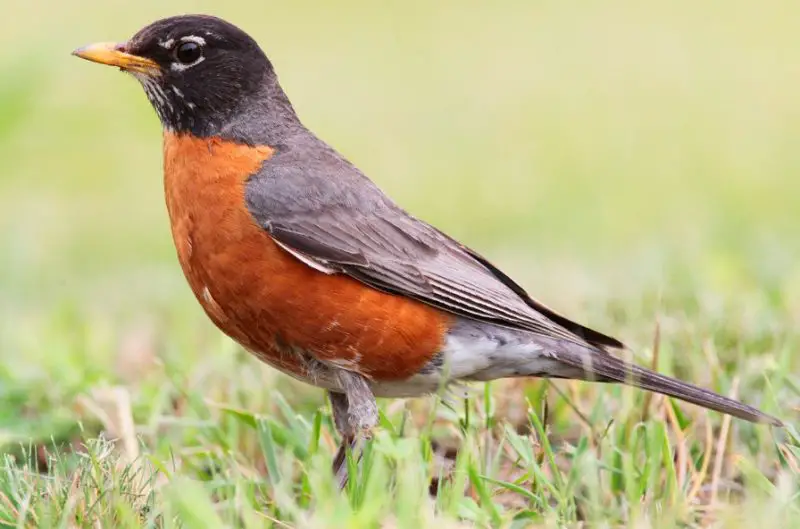
The American Robin is a familiar sight across Virginia, especially in spring when they flock to lawns and gardens in search of earthworms. This medium-sized thrush is easily recognized by its rusty-red breast, grayish back, and yellow bill. It has a rounded body, long legs, and a cheerful appearance.
American Robins are about 9 to 11 inches long with a wingspan of 12 to 16 inches. Their song is a series of rich, melodic phrases that sound like “cheerily, cheer up, cheerily, cheer up.” They are among the first birds to sing at dawn and are also known for their sharp alarm call when startled.
Robins are widespread throughout Virginia and can be found in nearly all habitats—woodlands, fields, city parks, and backyards. They breed in the state and are year-round residents in many areas, though some migrate farther south in winter. Their nests, often built on tree branches or ledges, are made of mud and grass.
Mourning Dove (Zenaida macroura)

The Mourning Dove is a slender, graceful bird with a soft, muted brown color and subtle black spots on the wings. Its long, pointed tail with white edges is a key field mark when seen in flight. The bird’s overall posture and gentle expression make it easy to recognize.
This species measures around 9 to 13 inches long and has a wingspan of 17 to 18 inches. Its call is a mournful, hollow “coo-OO-oo,” often mistaken for an owl by beginners. The sound is soothing and commonly heard at dawn and dusk. Its wings produce a whistling noise when it takes flight.
Mourning Doves are abundant year-round in Virginia and favor open areas such as fields, suburban lawns, roadsides, and power lines. They often feed on the ground and are regular visitors to bird feeders offering seeds, particularly millet. Their soft call and calm demeanor make them a peaceful presence in the landscape.
Downy Woodpecker (Dryobates pubescens)
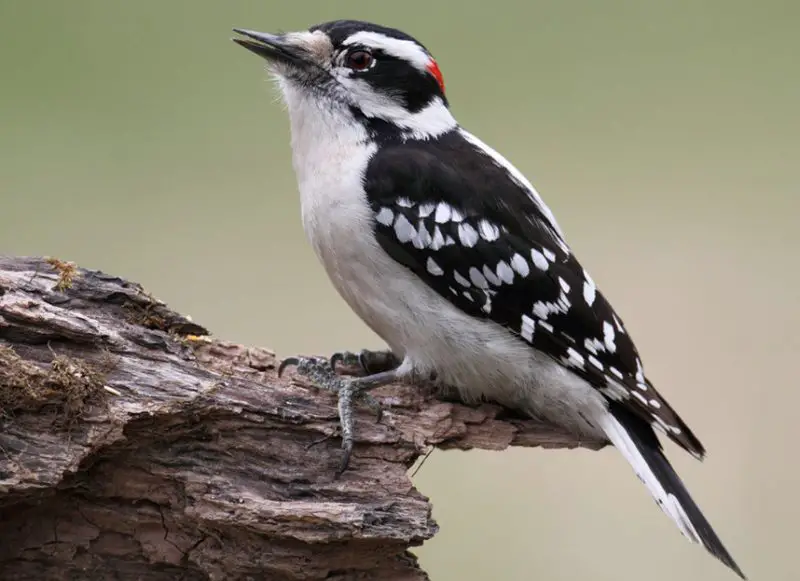
The Downy Woodpecker is the smallest woodpecker in North America and a common resident in Virginia’s woodlands and backyards. It features black-and-white plumage with white spots on the wings, a bold white stripe down the back, and a red patch on the back of the head in males.
This tiny bird measures about 5.5 to 6.7 inches long with a wingspan of 10 to 12 inches. Its call is a sharp “pik,” and it produces a soft, rapid drumming sound on trees. Unlike larger woodpeckers, the Downy can forage on the thinnest twigs and plant stems.
Downy Woodpeckers are widespread in forests, parks, orchards, and residential areas across Virginia. They often visit suet feeders and can be seen clinging to branches or hopping up tree trunks in search of insects. They nest in tree cavities and are especially active during spring and early summer.
Red-bellied Woodpecker (Melanerpes carolinus)

The Red-bellied Woodpecker is a medium-sized bird with striking black-and-white barred back and a red cap that extends from the bill to the nape in males (only to the crown in females). Despite its name, the reddish tint on the belly is often faint and hard to see.
It measures around 9 to 10.5 inches long with a wingspan of about 15 to 18 inches. Its call is a rolling, nasal “churr” or “kwirr,” and it drums loudly on tree trunks or wooden structures. These woodpeckers are known for their loud vocalizations and strong presence in the forest.
In Virginia, Red-bellied Woodpeckers are common in mature woodlands, swamps, parks, and backyards with large trees. They are year-round residents and frequently visit feeders, especially for peanuts and suet. Their versatility in habitat and feeding make them a familiar sight throughout the state.
Eastern Bluebird (Sialia sialis)
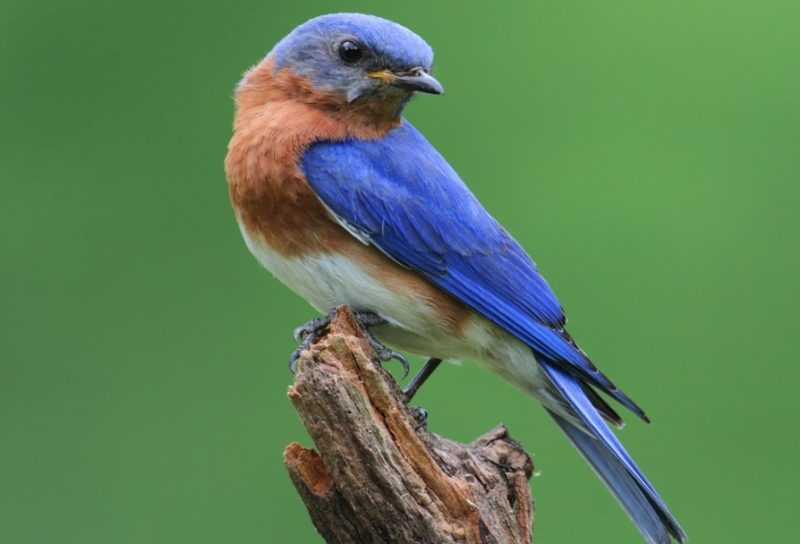
The Eastern Bluebird is a small thrush admired for its vivid plumage and gentle song. Males display brilliant blue upperparts with a rusty-red chest and white belly, while females are a more subdued gray-blue with lighter orange on the chest. Their rounded heads and short bills give them a soft, approachable look.
These birds are about 6.5 to 7.5 inches long with a wingspan of 9 to 12 inches. Their song is a soft, warbling “cheer cheerful charmer,” and their call is a short “chuck.” Bluebirds often perch on fence posts or low branches as they scan for insects on the ground.
Eastern Bluebirds are widespread in open fields, meadows, orchards, and suburban areas throughout Virginia. They depend on tree cavities or nest boxes for breeding and are attracted to areas with short grass and scattered trees. Thanks to nest box programs, their numbers have rebounded, making them a common and welcome sight across the state.
Common Woodland and Field Birds in Virginia
Eastern Towhee (Pipilo erythrophthalmus)
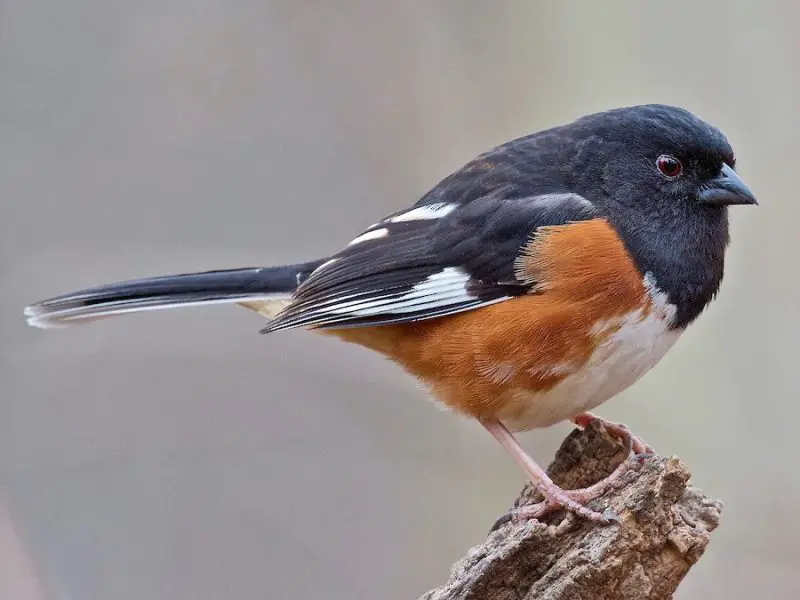
The Eastern Towhee is a striking songbird often seen scratching through leaf litter in search of food. Males are black above with bright rufous sides and a white belly, while females are similar but with rich brown replacing the black. Both sexes have red eyes and a noticeably long tail with white corners visible in flight.
This species measures about 7 to 8.5 inches long with a wingspan around 9.5 inches. Its call is a sharp “chewink,” and its well-known song sounds like “drink-your-tea,” with a rising and falling pitch. Eastern Towhees often sing from low shrubs or trees, especially during spring.
Towhees are common across Virginia in brushy areas, forest edges, overgrown fields, and thickets. They prefer dense undergrowth and are more often heard than seen, as they stay low and hidden while foraging. They remain in the state year-round and are especially active during the breeding season.
Gray Catbird (Dumetella carolinensis)
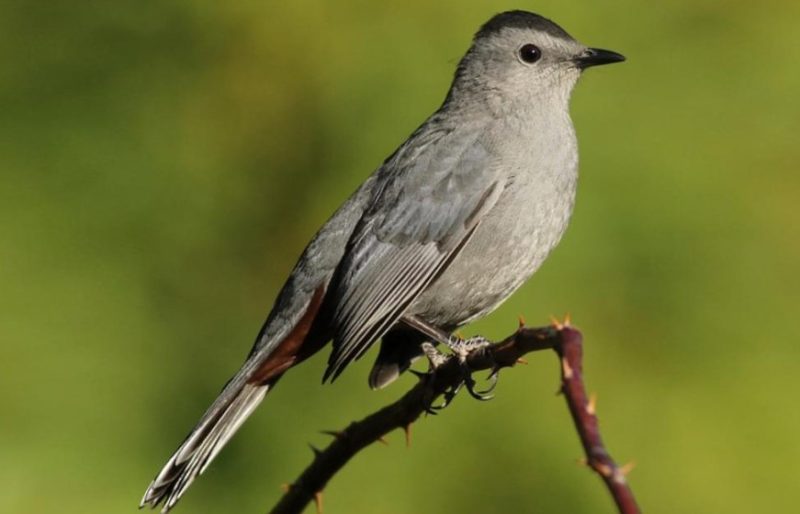
The Gray Catbird is a sleek, medium-sized songbird with smooth slate-gray plumage, a black cap, and a dark tail. It also has a rusty patch under the tail, which is often hidden. Its slender shape and inquisitive nature make it a fun bird to watch in gardens and shrubs.
It measures about 8.5 to 9 inches in length with a wingspan of 8.5 to 11.5 inches. The Catbird’s name comes from its mewing call, which sounds like a cat. It is also an excellent mimic and can imitate the songs of other birds, frogs, or even mechanical sounds in a long, rambling song.
In Virginia, Gray Catbirds are common during spring and summer, particularly in dense shrubs, hedgerows, and wooded edges. They are migratory and typically leave the state in fall. These birds are secretive but will venture out for fruit or suet in backyard habitats.
Song Sparrow (Melospiza melodia)
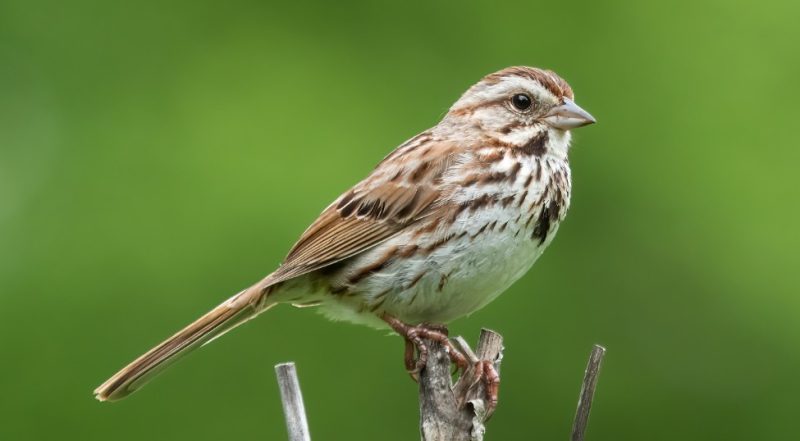
The Song Sparrow is a small, streaky brown bird with a rounded head, long tail, and a central dark spot on its white chest. Its coloration helps it blend well with its surroundings, but its constant singing makes it easy to detect, especially in spring.
Song Sparrows are about 5.5 to 7 inches long, with a wingspan of 7.5 to 9 inches. Their song is a bright, cheerful series of notes followed by a trill, often heard from fence posts, shrubs, or low branches. They also give a sharp “chimp” call when alarmed.
These sparrows are widespread across Virginia and can be found in a variety of habitats including wetlands, gardens, brushy fields, and forest edges. They are year-round residents in much of the state, though some may migrate. Their adaptability and constant song make them one of the most familiar sparrows.
Chipping Sparrow (Spizella passerina)
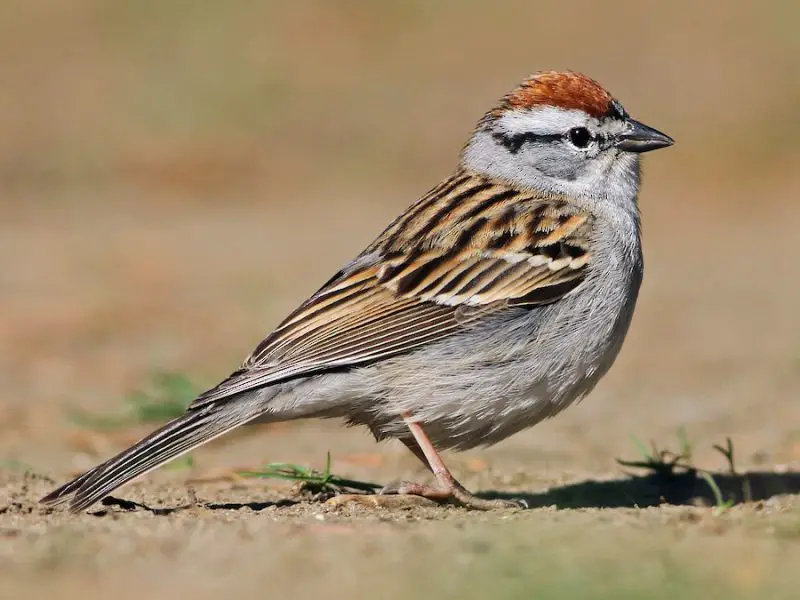
The Chipping Sparrow is a small, slim bird known for its crisp, clean markings. It has a rufous crown, a black eye-line, and a pale face and underparts. In winter, the plumage becomes more muted, but its thin build and quick movements remain the same.
It measures around 5 inches long with a wingspan of 8 inches. Its song is a simple, rapid trill, often compared to the sound of a sewing machine. Chipping Sparrows also make short, high-pitched calls and are often seen feeding on the ground or perching in small trees.
In Virginia, Chipping Sparrows are common spring and summer residents, especially in open woodlands, grassy areas, and suburban yards with scattered trees. They nest in shrubs and are among the most approachable sparrows in the state. Many leave in fall, but some overwinter in southern areas.
American Goldfinch (Spinus tristis)

The American Goldfinch is a small, vibrant bird well known for its bright yellow summer plumage in males, which contrasts with black wings and a black cap. Females and winter males are duller, with more olive tones. Their bouncy flight and cheerful nature make them a favorite among bird lovers.
Goldfinches are about 4.5 to 5 inches long with a wingspan of 7.5 to 8.5 inches. Their song is a series of melodic whistles, and their call while flying sounds like “per-chik-o-ree.” These birds breed later than most, often waiting for thistle plants to go to seed.
In Virginia, American Goldfinches are found statewide year-round, especially in fields, gardens, and areas with abundant seed-bearing plants. They are regular visitors at feeders offering sunflower or nyjer (thistle) seeds. Their joyful presence and bright coloration make them stand out in any setting.
Common Water and Open Area Birds in Virginia
Canada Goose (Branta canadensis)
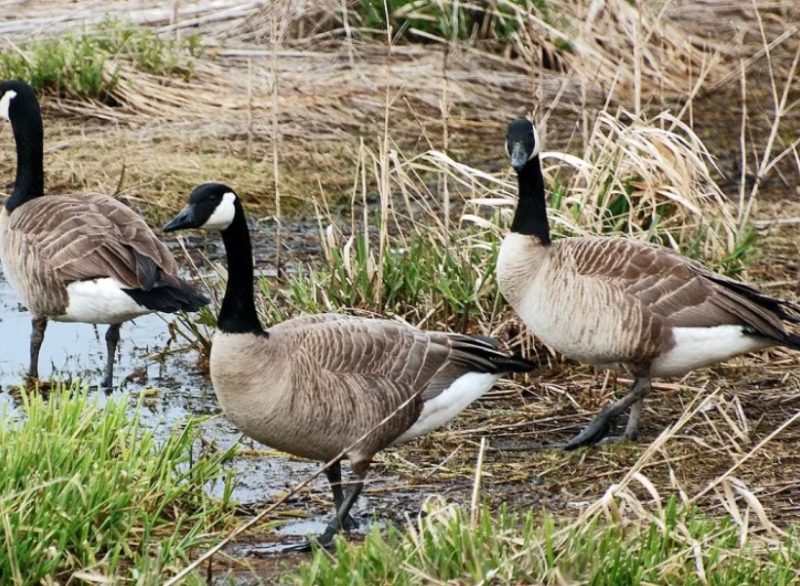
The Canada Goose is a large, familiar bird often seen grazing on grass near lakes, ponds, and rivers throughout Virginia. It has a black head and neck, white cheeks, and a brownish-gray body. These geese are known for their loud honking calls and distinctive V-shaped flight formations.
Measuring 30 to 43 inches in length with a wingspan of up to 6 feet, the Canada Goose is among the largest birds found in the region. Its call is a deep, resonant “ahonk,” especially noticeable during migration and in flocks near water. They are highly social and often travel in large groups.
Canada Geese are abundant year-round in Virginia, though migratory flocks swell their numbers in spring and fall. They are common in urban parks, golf courses, farmlands, and natural wetlands. Some populations remain in the state all year, especially where food and open water are available.
Mallard (Anas platyrhynchos)
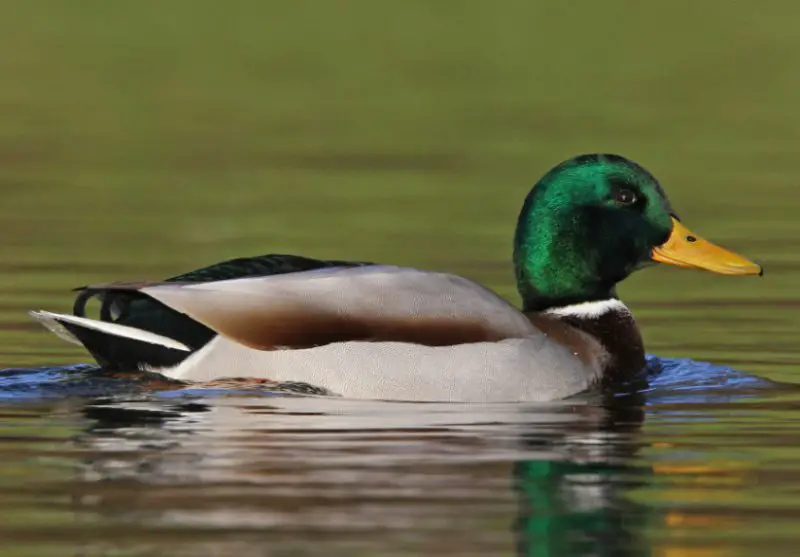
The Mallard is one of the most recognizable and widespread ducks in Virginia’s ponds, wetlands, and lakes. The male, or drake, has a glossy green head, white neck ring, and chestnut breast, while the female is mottled brown with an orange bill. Both sexes have a blue speculum patch on the wings.
These ducks are medium to large in size, measuring 20 to 26 inches long with a wingspan of up to 36 inches. Their calls are familiar—females give the classic “quack,” while males produce softer, raspier sounds. Mallards are dabbling ducks, feeding on the surface rather than diving.
Mallards are present year-round in Virginia and are especially numerous in winter when migratory birds join resident populations. They inhabit almost any body of freshwater, including urban and rural environments, and readily adapt to human presence, often gathering in city parks and farm ponds.
Great Blue Heron (Ardea herodias)
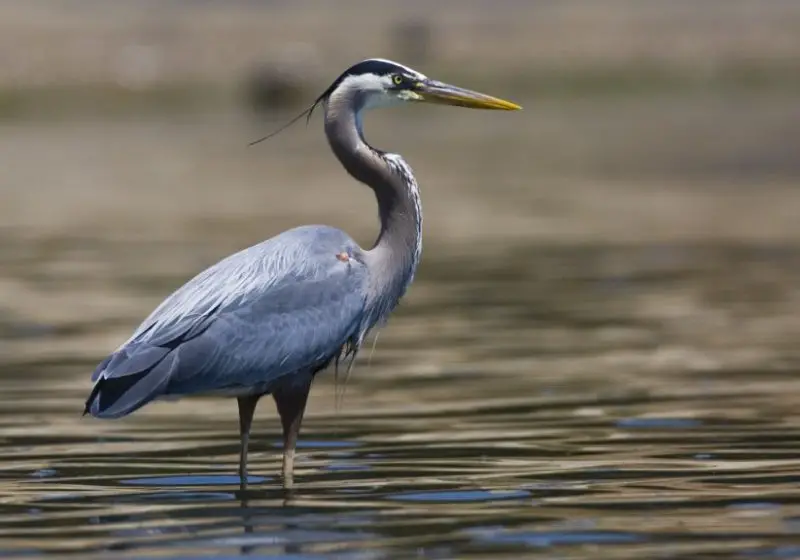
The Great Blue Heron is an impressive wading bird commonly seen in marshes, riverbanks, and shallow lakes across Virginia. It stands around 4 feet tall with long legs, a dagger-like bill, and blue-gray feathers. In flight, it tucks its neck into an S-shape and shows slow, powerful wingbeats.
This bird has a wingspan of up to 6.5 feet and makes a deep, croaking “fraaank” sound, especially when startled or taking flight. Great Blue Herons feed primarily on fish, amphibians, and small aquatic animals, which they stalk slowly before striking with their sharp bill.
They are year-round residents in Virginia, although more are seen in warmer months. Look for them standing motionless near water or flying high overhead with slow wingbeats. They nest in tall trees, often forming colonies known as rookeries in quiet wetland areas.
Red-tailed Hawk (Buteo jamaicensis)
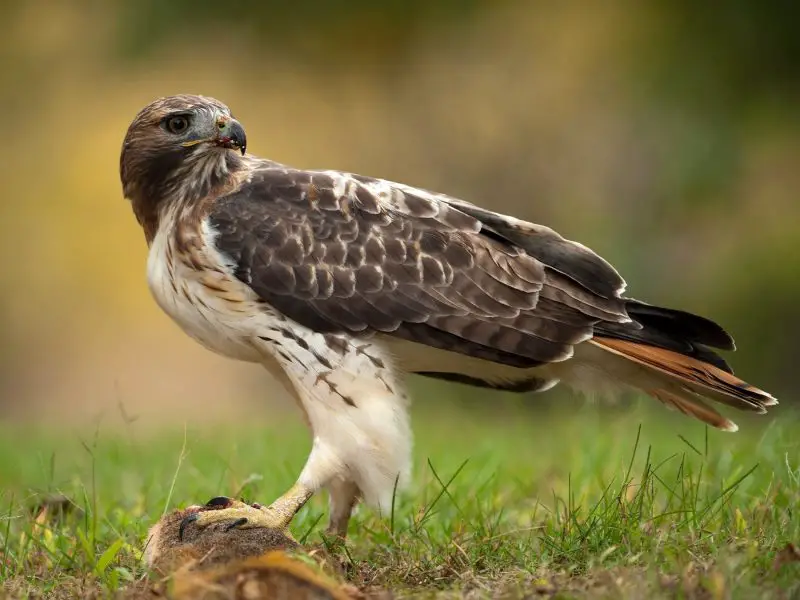
The Red-tailed Hawk is a large and powerful raptor commonly seen soaring above open fields or perched along highways and fence posts in Virginia. Adults have a broad, reddish tail, brown upperparts, and a pale belly with a dark belly band. Immature birds have brown tails with narrow bands.
It measures about 18 to 26 inches in length with a wingspan of 4 to 5 feet. Its call is a distinctive, harsh scream—“kee-eeeer”—often used in movies to represent all birds of prey. Red-tailed Hawks use their keen eyesight to spot small mammals from the air.
This species is found throughout Virginia year-round, favoring open country, grasslands, forest edges, and roadsides. They often build large stick nests in tall trees or on cliffs. Their adaptability and visibility make them one of the most observed hawks in the state.
Turkey Vulture (Cathartes aura)

The Turkey Vulture is a large, dark bird recognized by its bare red head, long wings, and soaring flight. Its plumage is mostly blackish-brown, with a lighter underside and silvery flight feathers. Unlike hawks, it holds its wings in a shallow V-shape when gliding and teeters from side to side.
Turkey Vultures are 25 to 32 inches long with a wingspan of about 6 feet. They rarely make vocal sounds, but may hiss or grunt when disturbed. These birds are scavengers, using their excellent sense of smell to locate carrion, which they clean up from roadsides and natural areas.
In Virginia, Turkey Vultures are widespread and commonly seen from spring through fall, with some individuals staying year-round. They roost in large communal groups and often gather in open country, forests, and near roads. Their soaring behavior and ecological role make them an important part of the ecosystem.
Best Time and Places to See Birds in Virginia
Virginia offers exceptional birdwatching opportunities year-round, but the best times are during spring and fall migration—typically from March to May and again from September to November. During these periods, thousands of migratory birds pass through the state, including warblers, shorebirds, hawks, and waterfowl. Spring brings vibrant colors and bird songs, while fall provides a chance to see mixed flocks and raptor migrations.
Some of the top birding locations in Virginia include Shenandoah National Park, which offers wooded trails and mountain overlooks ideal for spotting songbirds and raptors. The Eastern Shore, particularly the Chincoteague National Wildlife Refuge, is a hotspot for shorebirds, wading birds, and waterfowl. The Great Dismal Swamp in southeastern Virginia is another prime destination, especially for warblers and other forest birds.
Closer to urban areas, birders can visit places like Huntley Meadows Park in Fairfax County or the James River Park System in Richmond. These accessible spots provide excellent views of herons, woodpeckers, owls, and more. With its rich diversity of habitats—ranging from coastal marshes to mountain forests—Virginia truly is a birdwatcher’s paradise throughout the seasons.

